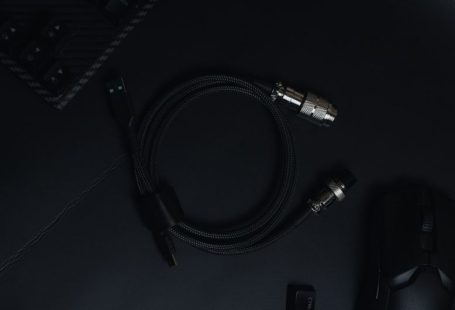In the realm of robotics, the fusion of technology and innovation has given rise to a new wave of creativity. One particularly intriguing project gaining attention is the task of integrating a micro PC into a robot. This endeavor presents a unique challenge that combines the intricacies of computer programming with the physical construction of a robotic body. By blending these two worlds, enthusiasts can create a versatile and dynamic robot that is capable of a wide range of functions.
Choosing the Right Micro PC
The first step in building a micro PC into a robot is selecting the right micro PC for the job. It is essential to choose a micro PC that is powerful enough to handle the tasks you plan to assign to your robot. Factors to consider include processing speed, memory capacity, and connectivity options. Popular choices for micro PCs include Raspberry Pi, Arduino, and BeagleBone, each offering its own set of features and capabilities. Careful consideration of the specific requirements of your project will guide you in selecting the most suitable micro PC for your robot.
Integrating Hardware Components
Once you have chosen a micro PC, the next step is to integrate the necessary hardware components into your robot. This may include motors, sensors, cameras, and other peripherals that will enable your robot to interact with its environment. Careful planning and design are essential to ensure that all components fit together seamlessly and function harmoniously. Wiring and connections must be carefully managed to prevent interference or malfunction. By skillfully integrating hardware components, you lay the foundation for a robot that is both robust and responsive.
Programming the Robot
With the hardware components in place, the next challenge is to program the robot to perform the desired tasks. This involves writing code that instructs the micro PC on how to interpret sensor data, control motors, and communicate with external devices. Programming languages such as Python, C++, and Java are commonly used in robotics projects and offer a wide range of capabilities. Through diligent coding and testing, you can fine-tune the behavior of your robot and unlock its full potential. The programming stage is where the magic truly happens, as you breathe life into your creation and watch it come alive.
Exploring Applications
The integration of a micro PC into a robot opens up a world of possibilities in terms of applications. From autonomous drones to mobile robots that assist in household chores, the potential uses for a micro PC-powered robot are limited only by your imagination. Robotics enthusiasts can explore fields such as artificial intelligence, machine learning, and computer vision to enhance the capabilities of their robots. By continually pushing the boundaries of what is possible, you can create a robot that is not only functional but also a testament to human ingenuity.
Challenges and Rewards
Building a micro PC into a robot is a challenging yet rewarding endeavor that requires patience, creativity, and technical skill. Along the way, you may encounter obstacles and setbacks that test your resolve. However, overcoming these challenges will ultimately lead to a sense of accomplishment and pride in your creation. Whether you are a seasoned robotics enthusiast or a beginner looking to dip your toes into the world of robotics, building a micro PC into a robot is a journey that promises excitement and fulfillment.
Innovation Beyond Boundaries
As you embark on the journey of building a micro PC into a robot, remember that the only limits are those you impose upon yourself. Embrace creativity, explore new ideas, and push the boundaries of what is possible. By combining the power of a micro PC with the versatility of a robot, you have the opportunity to create something truly extraordinary. Let your imagination soar, and let your robot be a testament to the endless possibilities that lie at the intersection of technology and innovation.





